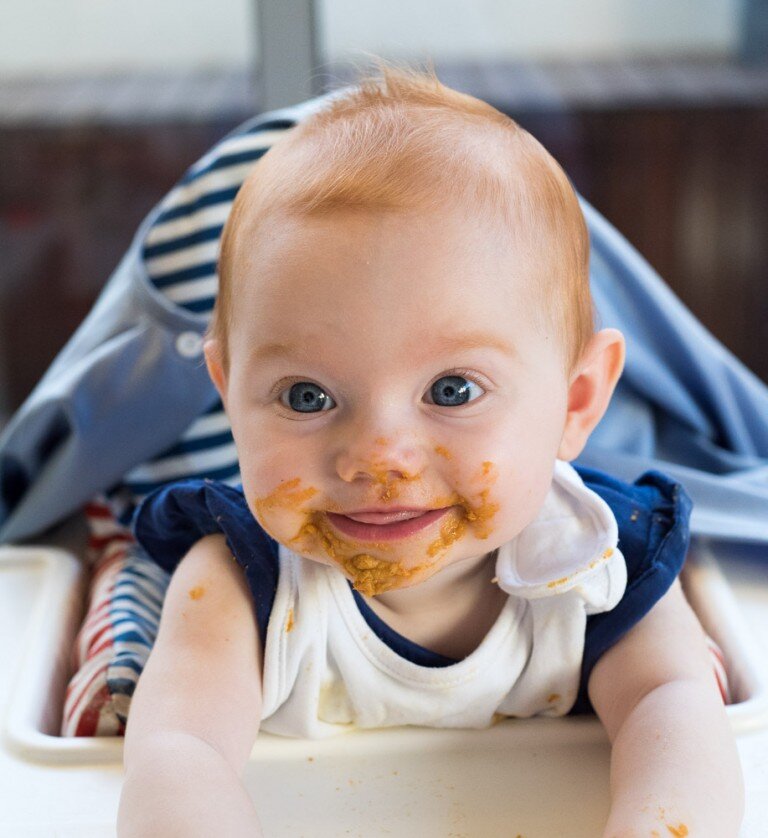Signs of Readiness for Solids
How do you know when your baby is ready to eat?
If you’re thinking it might be time to start solids, here are the three signs of readiness look for.
Starting solids is an exciting milestone in your baby’s life and marks the beginning of a fun journey of introducing your little one to the wonderful world of food.
Babies typically start to show signs of readiness for solids by around 6 months, but interpreting these signs can be a confusing task.
And to make things even more confusing, there’s conflicting advice about starting solids everywhere you turn, not to mention the opinions and (well-meaning) advice of grandparents, friends, neighbours and everyone else who wants to offer their two cents worth on when your baby is ready for food!
Why all the conflicting advice about when to introduce solids?
One of the reasons there is so much confusion around this the best age to start solids is that advice has changed a lot over the years.
Until recently, parents were told to introduce solids at around 4 months of age. However, the World Health Organisation (WHO) now recommends that solids are introduced at around 6 months of age, with exclusive breastfeeding recommended up until this time.
What the current recommendations say
For about the first 6 months of their lives, most babies only need breast milk or infant formula to meet their nutritional needs. After that stage they need additional nutrients, particularly iron and zinc from solid food as well as breast milk or formula.
Some babies may be ready for solids earlier than 6 months, but it’s not recommended to give solids before 4 months (17 weeks) as babies’ immune and digestive systems are not developmentally ready.
Why is it important for a baby to be ‘developmentally ready’ for solids?
Babies’ immune and digestive systems need to be mature enough to cope with solid food
They need to be physically able to swallow solid food
They need to have developed the strength to hold themselves upright so that they can eat safely
When deciding when to start solids, it’s important to remember that all babies are different and develop at different rates.
So each baby should be assessed based on their own individual signs of readiness, rather than according to their age or what other babies born around the same time are doing.
Signs of readiness for solids
Your baby can sit upright with minimal support and hold their head in a steady position
Your baby has lost their tongue-thrust reflex (extrusion reflex), e.g. they will take a spoon or food into their mouth rather than pushing it out with their tongue
Your baby can put things into their mouth accurately – this means they have the coordination to see a piece of food, pick it up and put it in their mouth on their own
What’s not (necessarily) a sign of readiness
An interest in food is often interpreted as a sign of readiness, however, babies take an interest in most things you do at around 4 months, so this doesn’t necessarily mean that they’re ready for solids.
Similarly, at around the age of 3-4 months, babies will begin to put everything they can into their mouths. This is often interpreted as hunger, but it’s actually an important developmental stage that desensitises their mouth to prepare them for starting to eat and is part of their process of exploring the world around them. It can also be a sign of teething!
What if your baby isn’t showing signs of readiness?
If your baby isn’t showing signs of readiness by the age of 7 months, have a chat with their doctor or maternal child health nurse.
Finally, when you do introduce solids, it’s important to remember that milk feeds will continue to provide most of your baby’s nutrition until they’re around 12 months old.

